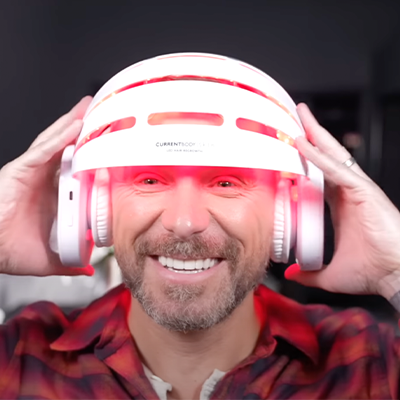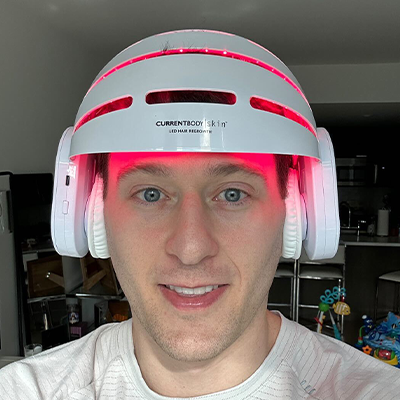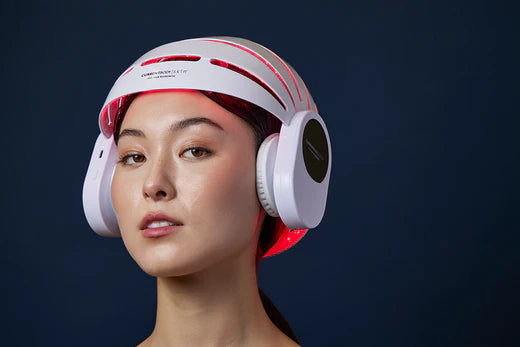LED 頭皮・頭髪ケアデバイス
薄毛ケアに最も効果的な赤色LEDデバイス
- ご利用いただけます:
2万円以上購入で追跡配送無料
製品のポイント:
- 12週間の使用で目に見える効果
- しっかりとした健康な髪へ
- ユニークなヘルメット形状が頭皮を完全にカバー
- 自宅で毎日10分のハンズフリートリートメント
- 4か月間返金保証 完全に満足されていませんか? 詳しく見る
頭皮ケアデバイスビフォー&アフター
実際に使用した方の結果
元気で健康的な髪に導く
男女ともに髪のダメージは、髪や頭皮にとって必要な成分が不足する状態によって引き起こされます。女性の場合、髪のダメージは全体的なボリューム感の低下につながり、男性の場合、髪のハリやコシの低下につながります。またAGA(男性型脱毛症)は、さまざまな要因が影響すると考えられています。一般的には男性ホルモンの関与が指摘されることが多いですが、ストレス、食事、生活習慣、喫煙、睡眠なども髪や頭皮の状態に影響を与える要素とされています。※男性型および女性型脱毛症診療ガイドライン2017年度版(日本皮膚科学会)
CurrentBody Skin LED頭皮・頭髪ケアデバイスはFDA(米国食品医薬局)の認証を受けた、厳しい臨床テストをパスした家庭用LED機器です。赤色のLED波長(620~660nm)を頭皮全体へ照射することが可能です。1日わずか10分間のご自宅のケアで頭皮へのケアができるユニークなLED機器です。

16週間以上のケアをおすすめ
継続することで以下のような効果を実感いただけます:
0~4週間:毛髪環境を整えます。最初の数週間で毛が抜ける方もいますが、これは健康な髪が成長するための自然なステップです。
4~8週間: より健康的な地肌へと導きます。
8~16週間:頭皮をトリートメントし、より良い頭皮環境を育てます。効果を促進するために定期的にデバイスを使用し続けてください。

よくあるご質問
以下ご質問にお答えします。

お困りですか?
ご質問がございましたらカスタマーサービスへご連絡ください。
詳しくはこちら CurrentBody Skin
さらにアイテムを見る









































